The NRGcoin concept has been thoroughly tested in a multi-agent simulation environment. To further validate the concept, we deployed it on a mini testbed. What follows is a technical description of the hardware demonstration platform.
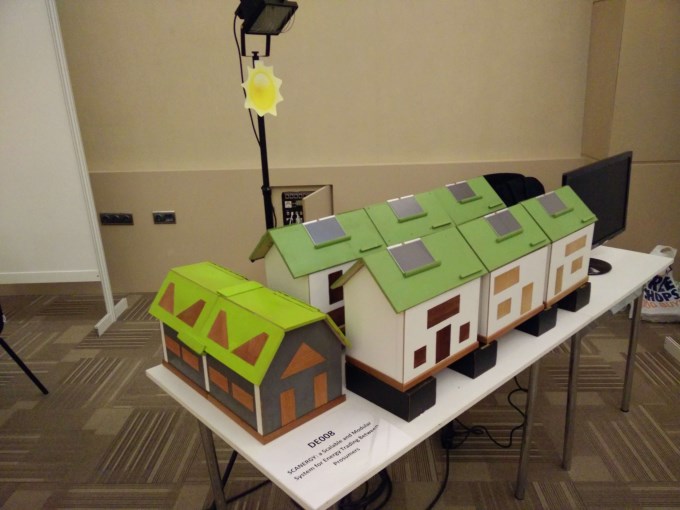
Within the demo we use real-life consumption data, provided by a Flemish Distribution System Operator (DSO). For this demo we have selected a typical Belgian neighborhood consisting of 6 prosumers and 56 consumers. To find a typical substation in the data, we applied a two level clustering that considers global features such as total trimester consumption, and local features such as daily consumption. The measurements that we use in this demonstration are collected between 1st of March 2014 and 31st of May 2014.
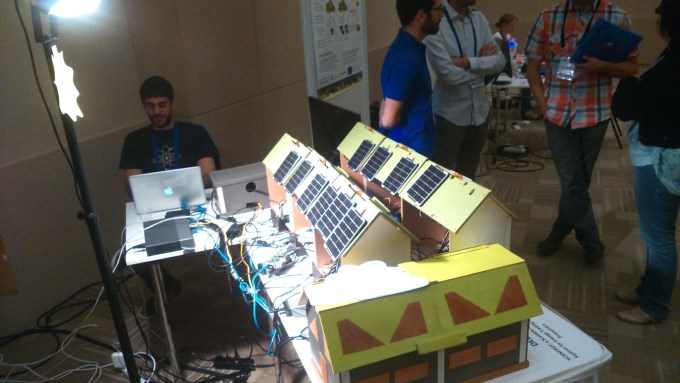
The substation and the six prosumers are represented by software agents running on individual Raspberry Pi boards. Prosumers produce energy in real-time using mini solar panels. A dimmable spotlight projector is automated to simulate the day/night cycle using a z-Wave controller. All 56 consumer agents are running in individual threads on two Raspberry Pi boards. Energy consumption of both prosumers and consumers is read from the real data. The boards allow agents to submit orders for buying and selling NRGcoins to an online market hosted and running in Azure Cloud. Orders are matched in real-time using continuous double auction, as employed by the New York Stock Exchange.
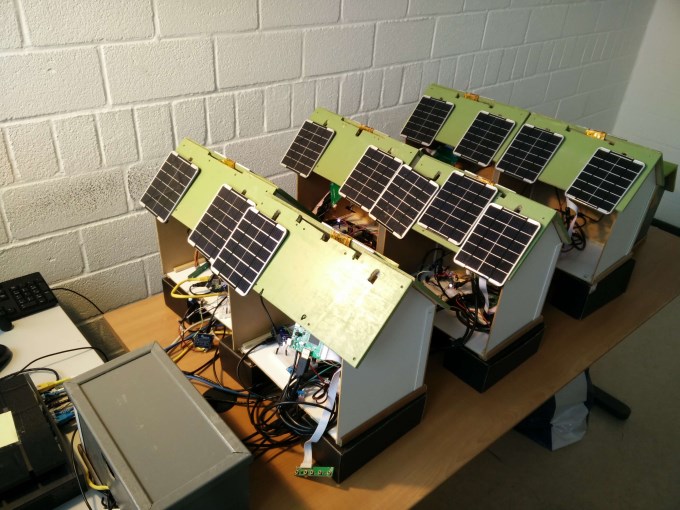
Our demo represents a multi-agent system that autonomously exchanges renewable energy using the NRG-X-Change incentive mechanism. Since the currency market is hosted in the Cloud, it allows agents to place bids from anywhere in the world. Thus, multiple neighbourhoods running in different parts of the world can seamlessly interact in the same scenario and demonstrate the scalability of our concept. All software agents are developed in Java, while the exchange market is developed in C# using Azure Service Bus for synchronizing actions. All components communicate using the RESTful Microservice architecture.
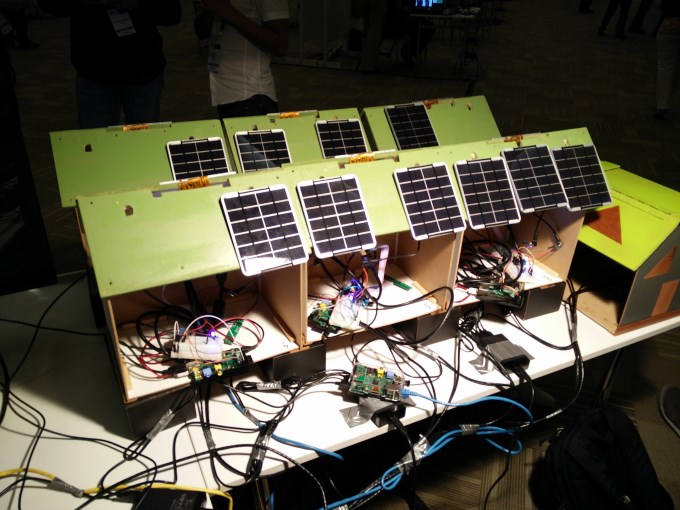
Each prosumer is equipped with a 3.7V lithium-polymer (LiPo) rechargeable battery of 2.6Wh. We scale the capacity of the physical batteries in software with factors between 1500 and 5000 to match that of real commercial batteries, which can range between 4kWh and 13.2kWh. The battery is charged by the mini solar panels and discharged using a heater resistor to simulate self-consumption or injection in the grid. The battery control strategy infers at every time slot whether it is most profitable to inject the excess green energy in the grid or to store it in the battery for later use, depending on the predicted energy balance in the neighborhood.
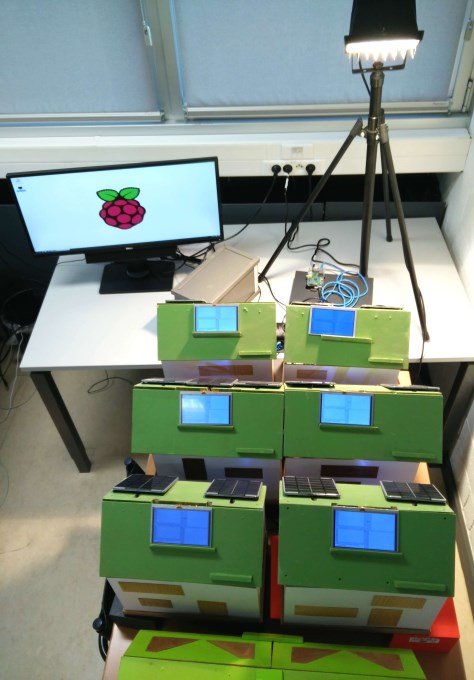
Prosumer houses have LCD screens showing in real-time: (i) individual energy production and consumption in kWh; (ii) NRGcoin balance of prosumer; (iii) NRGcoin transactions and payments; (iv) market orders for buying and selling the currency; and (v) the state of charge of the battery. Likewise, substation’s screens show aggregated information about: (a) total energy production and consumption of all houses; (b) NRGcoin balance of the substation; (c) all unmatched buy and sell orders in the currency market; (d) the evolution of the NRGcoin price.
While in reality measurements are taken every 15 minutes, we speed up our demonstration by a factor of 300 to arrive at 3-second time slots. Thus, charts are updated every 3 seconds, allowing users to observe in less than 5 minutes the behavior of a real neighborhood in a whole day. Users are also able to pause the execution of the entire demonstration (including the day/night cycle) in order to analyze the plots. This functionality is available via the user interface in the substation’s LCD display.
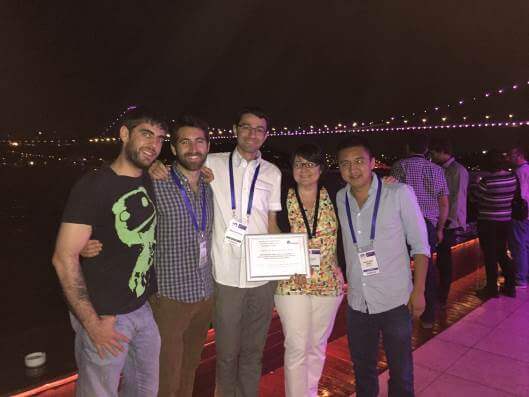
Finally, this demonstration platform won two Best Demo awards at international symposia.
If you want to see a demonstration of our smart-grid platform trading renewable energy using the blockchain and smart contracts, please contact us.